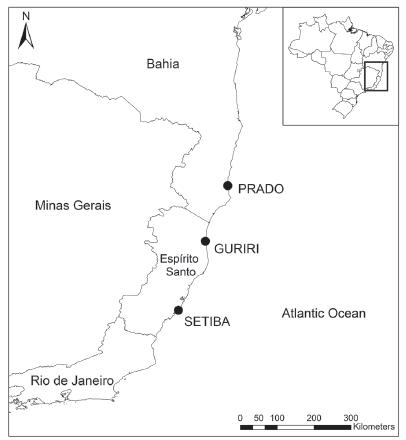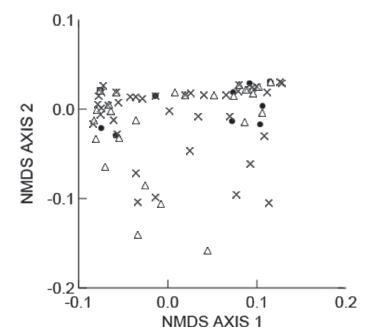In this study, we analyzed diet, sexual dimorphism and bromeliad use in three populations of the hylid frog Phyllodytes luteolus from restinga habitats along the Brazilian coast. We found 13 arthropods categories in 161 stomachs. Ants and termites were the dominant prey items. The similar trophic niche across populations suggests this species has a conservative diet. We found sexual dimorphism regarding body size and jaw width. We recordedP. luteolus in five bromeliad species, but predominantly inAechmeablanchetiana (35.6% of individuals recorded). We recorded solitary individuals in 44% of occupied bromeliads, and never found two males sharing the same bromeliad. The data is suggestive that populations ofP. luteolus has a conservative diet independent of area, with ants and termites the being most relevant prey items. The sexual dimorphism in jaw and the solitary males may suggest that this species have territorial behavior.
Atlantic forest; bromeliad; diet; sexual dimorphism; territorial behavior

 Ecology of the bromeligenous frog Phyllodytes luteolus (Anura, Hylidae) from three restinga remnants across Brazil's coast
Ecology of the bromeligenous frog Phyllodytes luteolus (Anura, Hylidae) from three restinga remnants across Brazil's coast


